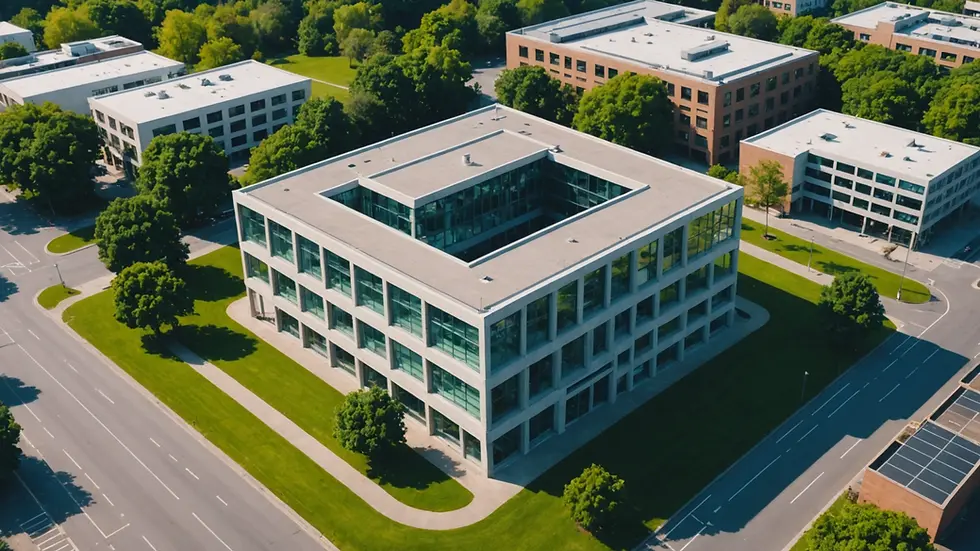How Biomimicry, 3D Modeling, and Parametric Architecture are Shaping the Built Environment
- argaranara
- Jan 23
- 4 min read
Imagine walking through a city where the buildings not only meet human needs but also respect and enhance the natural environment. This vision is becoming a reality thanks to biomimicry, a design philosophy that draws inspiration from nature to solve complex challenges in architecture. As architects integrate advanced technologies like 3D modeling, the results are stunning: structures that are not only beautiful but also sustainable. In this journey, we will explore the history of biomimicry in architecture, the pivotal role of 3D modeling, and the promising future of parametric architecture.
History of Biomimicry in Architecture
The roots of biomimicry run deep. Ancient cultures were aware of the need to blend their structures with the environment. For example, traditional Japanese architecture often features designs that mimic the surrounding flora, using local materials to create harmony with nature. This long-standing practice laid the groundwork for what we now understand as biomimicry.
The 20th century saw a rise in the term "biomimicry," popularized by architects like Frank Lloyd Wright. His famous design, Fallingwater, stands as a testament to this philosophy, with a structure that appears to rise from the waterfall below, creating a seamless connection between the built environment and the natural landscape.
The late 20th and early 21st centuries brought a renewed focus on biomimetic design, driven by increasing environmental awareness. Architects began systematically observing and studying biological processes, allowing innovation to flourish. A significant 2019 report by the World Green Building Council indicated that buildings account for about 39% of global CO2 emissions. This has heightened the urgency for sustainable design approaches grounded in nature.

Role of 3D Modeling in Biomimetic Design
3D modeling has transformed the landscape of architectural design, especially when it comes to biomimicry. This technology enables designers to replicate the beauty and efficiency of organic forms in their architectural creations. For instance, parametric design software allows architects to simulate natural systems and processes, testing different configurations and materials before finalizing a design.
Through 3D modeling, designers can visualize structures inspired by nature more effectively. A compelling example is the Eden Project in the UK, which features geodesic domes designed based on the structural efficiency of soap bubbles. This approach not only saves materials but also enhances the aesthetic quality of the buildings.
Another advantage of 3D modeling is its ability to analyze data from the natural world. Researchers have found that studying the branching patterns of plants can lead to insights in optimizing energy-efficient designs. The use of computational technologies enables architects to mimic the strength and resilience found in biological structures, such as bird bones, reducing material usage by up to 30% while maintaining structural integrity.
3D modeling also fosters collaboration across disciplines. Architects can work alongside engineers and biologists, resulting in designs that are not just attractive but also environmentally harmonious.

Future Trends in Parametric Architecture
Looking forward, the integration of nature and technology in architecture will likely deepen through parametric design. This approach sets boundaries for design while allowing room for adaptation. Structures can reflect environmental features like climate, light, and geography, leading to buildings that perform better and feel more connected to their surroundings.
A promising trend is the development of advanced materials that draw inspiration from nature. Innovations such as self-cleaning surfaces or humidity-responsive structures can improve building performance. For instance, research from 2021 suggests that self-healing concrete, inspired by biological processes, can extend the lifespan of structures by up to 200%.
The concept of living architecture is also gaining traction. This idea involves designing buildings that evolve and adapt over time, embedding organic systems into structures. By creating spaces that improve air quality and support biodiversity, architects can mirror the interconnectedness found in ecosystems. In cities, this can mean incorporating green roofs and walls that not only beautify but also support local wildlife.
Automation and artificial intelligence will significantly influence parametric architecture. These technologies can analyze vast datasets, ensuring designs are optimal for both aesthetics and ecological function. The result will be buildings that not only mimic nature in form but also actively contribute to their ecosystems.

Embracing the Future of Architecture
The connection between nature and technology through biomimicry represents not just a trend but a crucial evolution in architecture. The journey through the history of biomimicry reveals an ever-growing source of inspiration rooted in the natural world. The advancements in 3D modeling are invaluable, as they allow architects to visualize and refine designs with unmatched precision.
As we look to the future, we can expect exciting trends in parametric architecture, where innovations in materials, living architecture, and automation converge. By adopting biomimetic design principles, architects can create spaces that both honor nature and address the pressing challenges of our time.
This journey towards harmonious design beckons architects to learn from nature. With a foundation in biomimicry, our built environment can serve human needs while fostering a healthier planet. The architectural future promises a blend of functionality and beauty, living in harmony with the world around us.



Comments